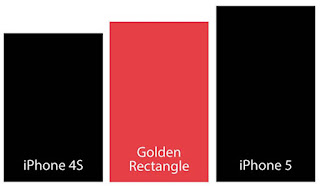13. Canvas Shape 2: The Golden Ratio
Now that you know the basics, here's another question. Which rectangles look best? Is it a matter of opinion or fact? Well... Some people claim that the best rectangle is the Golden Rectangle, which is made from a square:
The ratio of a Golden Rectangle's sides is φ (phi = 1.6180339887...), an irrational number, similar to π (pi = 3.14159...). φ is often called the Golden Mean or Golden Ratio. By repeating this process, you can create a lovely spiral:
The golden ratio has been used to create ideal canvas proportions, and to choose where to place elements in a composition. For this lesson, our concern is canvas shape. Some artists and historians claim that this "divine proportion" has been used by the greatest artists in history, from ancient Egypt and Greece to Da Vinci, Michelangelo, Rembrandt, Turner, and Manet.
They say you can also find examples in nature, especially seashells:
Note, the black line doesn't really follow the line of the shell. It's a different proportion. On the internet, you can find many examples of this spiral superimposed on artworks, often in complicated, confusing ways.
It's described as a secret to making great art, like a magic bullet, that all the masters knew and used––something to excite beginning artists.
Here's the problem––it's debatable, and many professional artists, for example James Gurney, call it a myth. It's easy to superimpose these diagrams in any picture, but it doesn't prove the artists/architects actually used them in their planning, nor does it prove that it makes the art better.
Putting these spirals over artwork is easy, partly because of pareidolia - a psychological phenomenon where people perceive things that aren't really there. No, not like schizophrenia––this isn't about hearing voices. This is more like seeing shapes in clouds, or playing a song backwards, and hearing words. Our brain wants to understand what it sees, so it will sometimes see a pattern that isn't there, or was unintentional.
The golden ratio is only part of the debate in the importance of geometry in canvas shape, because supporters say there is more than one divine proportion. Artist and teacher Myron Barnstone describes a series of "root" rectangles, which are all related to a square, even though none represents the golden ratio:
"If the golden rectangle (1.618:1) really was the ideal shape, why didn't it appear everywhere in our carefully designed environment? Why don't we find it in the proportions of movie screens (1.37:1, 1.85:1, 2.35:1), photographs (1.50:1) television monitors, (1.33:1, 1.78:1) computer screens (1.33:1, 1.60:1, 1.78:1), credit cards (1.5858:1), not to mention iPhones, tablets, and office paper? Those rectangles, each so commonplace in our daily lives, vary greatly, and none of them quite matches the supposed ideal.
Now, let's bring the question to Stapleton Kearns, a practicing fine artist:
Notice, that Mr. Kearns didn't mention the golden ratio once. All his advice is practical and economical, and none of the standard sizes above represents the golden ratio, although a 5" x 7" canvas is a root 2 rectangle. None of the others is root anything. So, there you see the difference between the theory of an art school and the reality of a working, professional artist.










Comments
Post a Comment